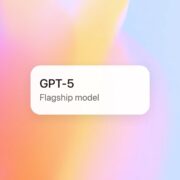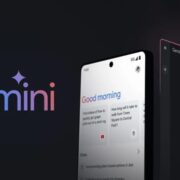How to Write ChatGPT Prompts That Actually Work (With One Formula You’ll Use Forever)
![A backlit keyboard with glowing text above it displaying a formula for how to write ChatGPT prompts: “You are a [role]. Help me [goal], in a [tone] voice. In a [format] of [length].”](https://www.tonyreviewsthings.com/wp-content/uploads/2025/05/how-to-write-chatgpt-prompts-banner-1030x579.jpg)
Why ChatGPT Keeps Giving You Garbage Responses
Let’s be real: figuring out how to write ChatGPT prompts that actually work can feel like a mystery. ChatGPT can sometimes sound like it’s just trying to hit a word count. You know the type—filler-packed, generic, and weirdly stiff. You ask it to help with something simple, and it gives you a wall of text that’s too vague, too formal, or just completely off the mark. The reason? Your prompt is probably too short, too open-ended, or missing key context.
A Bad Prompt in Action
“Write me a blog post about social media.”
That’s like walking into a restaurant and saying, “Feed me.” Technically it works, but you’re rolling the dice on what you get. Most likely, it won’t be what you actually wanted.
Why That Happens
ChatGPT is a language model, not a mind reader. It doesn’t know what you’re picturing in your head unless you spell it out. Without direction, it defaults to safe, average guesses. That means you’ll get the most middle-of-the-road, beige answer possible. It’s not being lazy—it’s doing exactly what you told it to do, just not what you meant to say.
The fix? Structure. The difference between a weak response and a strong one usually comes down to how well you frame your prompt.
How to Write ChatGPT Prompts Using a Proven Formula
Here’s the one formula you can reuse across nearly any task to get sharper, more relevant, and more natural-sounding results:
You are a [role]. Help me [goal], based on [context], in a [tone/style] voice. Limit to [output format/length].
This works whether you’re brainstorming blog topics, writing an email, building a lesson plan, drafting marketing copy, scripting a video, or just trying to get unstuck. It’s one of the most reliable methods out there for learning how to write ChatGPT prompts that actually deliver.
Here’s How to Make This Prompt Structure Work for You:
- [Role] – Sets the perspective. Is it a copywriter, chef, historian, YouTuber, project manager, therapist, or coach?
- [Goal] – What do you want ChatGPT to help you do? Be specific. Don’t say “write an outline.” Say “create a 5-point outline for a YouTube video targeting beginner runners.”
- [Context] – Supplies backstory or background. What’s the situation? Who’s it for? What’s the angle?
- [Tone/Style] – Define the vibe: casual, formal, sarcastic, friendly, inspirational, snarky, humorous.
- [Output Format/Length] – Guide the structure. Do you want headlines, tweets, a 100-word paragraph, 5 bullet points, 3 options?
When you give the model this framework, it snaps into the right mindset. It knows who it is, what it’s doing, and how to deliver the result in your voice.
Real Examples of How to Write ChatGPT Prompts by Use Case
Here are some ready-to-use examples showing the formula in action, organized by common user personas so you can jump to the one that fits you best.
For Writers
Prompt: You are a content strategist. Help me brainstorm blog topics for a personal finance site targeting Gen Z. Use a casual tone. Give 10 headline ideas.
Why it works: Role is clear, target audience is specific, and tone is defined.
For Students
Prompt: You are a college professor. Explain quantum entanglement like I’m 12. Keep it under 200 words and use fun analogies.
Why it works: You’re telling the model to simplify and entertain—not just explain.
For Marketers
Prompt: You are a DTC brand copywriter. Help me write a product description for a spicy pickle energy drink in a sarcastic tone, under 100 words.
Why it works: This gives the AI a niche persona, a tone, and a character-driven edge.
For Job Seekers
Prompt: You are a recruiter. Rewrite this resume summary to sound more confident and achievement-focused, but keep it under 75 words.
Why it works: It defines the goal (more confident tone), limits the format, and focuses on outcome.
For Creators
Prompt: You are a YouTuber. Help me write an ad read for a VPN sponsor that sounds like I’m mildly annoyed but still convincing.
Why it works: Tone is unconventional, and that makes the result stand out from basic scripts.
For Coaches and Consultants
Prompt: You are a leadership coach. Help me write a short motivational blurb for a LinkedIn post about handling failure. Make it sound uplifting but real.
Why it works: It mixes tone, goal, and audience all in one tight sentence.
Advanced Tips for Writing Better ChatGPT Prompts
Once you’ve nailed the formula, here’s how to get even better results:
- Stack roles – Try “You’re a chef and a sarcastic critic” or “You’re a financial planner and a dad of three.”
- Add style instructions – “Sound like a YouTube narrator on a caffeine rush” or “Write like it’s for a Buzzfeed listicle.”
- Include examples – Feed it a paragraph, bullet list, or tone sample and say, “Match this vibe.”
- Ask for rewrites – “Can you make that more concise?” or “Now try a more casual version.”
- Use iterative feedback – Don’t be afraid to go back and forth. Prompt > tweak > prompt again.
Think of ChatGPT as your creative collaborator. The more you coach it, the better and more personalized the output becomes.
TL;DR – Copy This and Use It Everywhere
Here’s the full formula again. Bookmark it, screenshot it, or write it on a sticky note and slap it on your monitor:
You are a [role]. Help me [goal], based on [context], in a [tone/style] voice. Limit to [output format/length].
This single prompt structure works for:
- Blog writing
- Brainstorming topics
- Job applications
- Video scripts
- Email marketing
- Outlines
- Course materials
- And more
Once you start using it, you’ll wonder why you ever wasted time typing vague prompts like “Write a blog post about X.” This formula saves time, delivers clearer results, and makes your AI outputs actually sound like they came from someone who gets it. It’s a no-brainer once you understand how to write ChatGPT prompts with this kind of structure.











Leave a Reply
Want to join the discussion?Feel free to contribute!